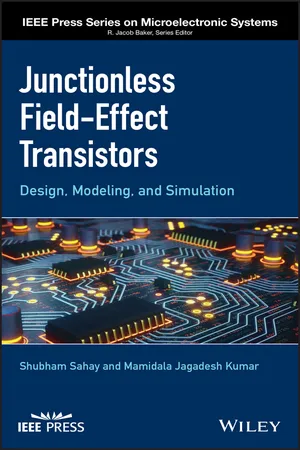We are living in an era of information technology where smartphones, smart watches, and smart technology have become an inevitable part of our lives. You might have observed a drastic improvement in the performance of these smart devices. For instance, the shift from single core processors to multicore processors, the increase in CPU's frequency from few MHz to several GHz, the increase in the RAM from few MB to several GB, and so on. All these factors have led to a tremendous increase in the performance of these computing devices. The smart devices found in every household nowadays have a performance metric comparable to the earlier supercomputers. For instance, the Apple watch has twice the processing power of a 1985 Cray-2 supercomputer [1]. In addition, the device size has also shrunk significantly and the focus in the research and development of computing devices has shifted toward mobile devices. Moreover, the functionality per device has also increased considerably. For instance, the present day smartphones not only have processing capabilities of a supercomputer but can also perform the functions of a good quality camera, a Wi-Fi dongle, an X-BOX gaming system, and so on. To summarize, every other person in this modern era has access to low-cost, high-performance gadgets.
Have you ever wondered what drives the “smartness” and the supercomputing capabilities of all the smart technology gadgets? Let us try to understand this from a human body–gadget analogy. Just like the human body is composed of cells as the building block, the electronic gadgets are made up of transistors. In human body, the cells are grouped together to perform a particular function and form an organ. Therefore, the efficiency and the number of different functions that can be performed by the body depends exclusively on these cells. Similarly, the transistors act like a switch and are wired together in a chip (which is similar to the organ from body–gadget analogy) in a specific manner to enable a particular function. The larger the number of transistors in a gadget, the more the number of functions it can perform. The research and development in the field of transistors has driven this “smart” revolution. It is indeed very interesting how such small chunks of silicon chips drive our lives.
1.1 Transistor Action
But what exactly is a transistor? The word transistor was given by its first inventors: Shockley, Brattain, and Bardeen in 1947 [2–5]. At that time, no one would have wondered that this discovery (which actually was an accident) would be driving the lives of common people for generations to come. The transistors are often conceived as a device where the resistance between two terminals may be controlled by the current/voltage at the third terminal. Therefore, transistor refers to any three-terminal device where the current (or voltage) between two terminals may be controlled by the action of voltage (or current) at the third terminal.
In the subsequent sections, we shall see how the most common transistors work from both a qualitative approach and an energy band diagram perspective. The bipolar junction transistors (BJTs) dominated the semiconductor industry until late 1970s. Although BJTs are still used in the high-frequency circuits such as in radio frequency circuits, the throne is captured by the metal-oxide-semiconductor field-effect transistors (MOSFETs) and they continue to drive the semiconductor industry even today. Therefore, we shall discuss the MOSFETs in detail in the next section.
Transistors such as MOSFETs act as switches in the integrated circuits. However, it may be noted that the MOSFETs are not ideal switches (which are expected to consume no power when switched-OFF and deliver a high current instantaneously when switched-ON). The MOSFETs exhibit a small leakage current and, therefore, consume power from the supply even when they are switched-OFF. This power consumption is termed as the static power dissipation (Ps) given as
where VDD is the supply voltage and IOFF is the leakage current that flows through the transistor when the switch is turned off. Furthermore, the MOSFETs also consume a significant power when switched from the ON-state to OFF-state or vice versa. This power consumption also depends on the frequency of switching of the MOSFETs and is termed as the dynamic power dissipation (Pd) given as
where VDD is the supply voltage, f is the frequency of operation and α is the switching probability, which simply tells us that the MOSFET is not switched in each cycle, and CL is the load capacitance. In a wired network of MOSFETs, a MOSFET drives another MOSFET. Therefore, in most cases CL is the input capacitance of the MOSFET. The interested readers are requested to refer [5] for more details.
Until recent past, the focus of the researchers all over the world was to miniaturize the dimensions of the MOSFETs so as to increase the number of MOSFETs per chip, which would not only reduce the area enabling mobile devices but also increase the number of operations that may be performed by a single chip. Scaling the MOSFET dimensions also reduces the input capacitance and increases its capability (current) to drive another MOSFET in the wired chip network and helps to achieve large frequency of operation due to fast charging of CL. Although the drive current of MOSFET increases with scaling, the OFF-state current also increases drastically due to the short-channel effects that are triggered by MOSFET gate length scaling. The increase in the OFF-state current results in a significant static power dissipation. While the dynamic power dissipation was a major concern for the researchers until recent past, the scaling trends suggest that the ...


